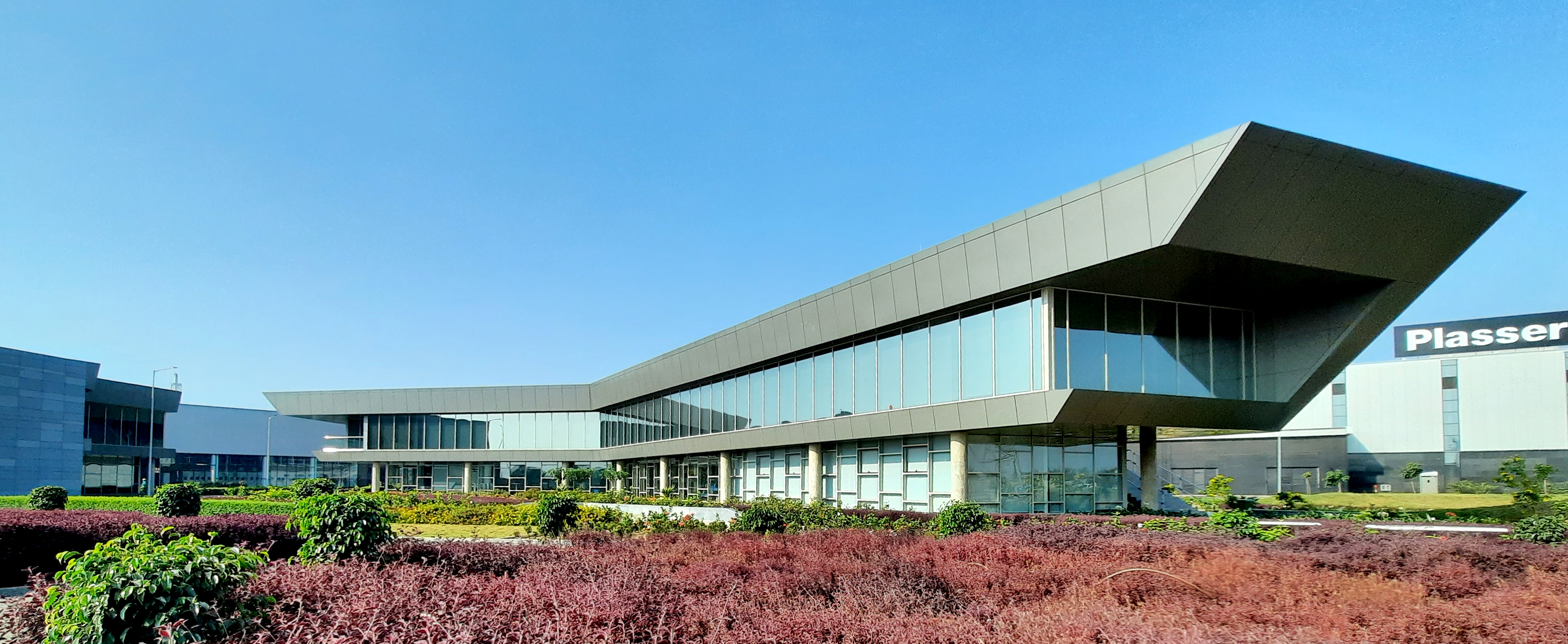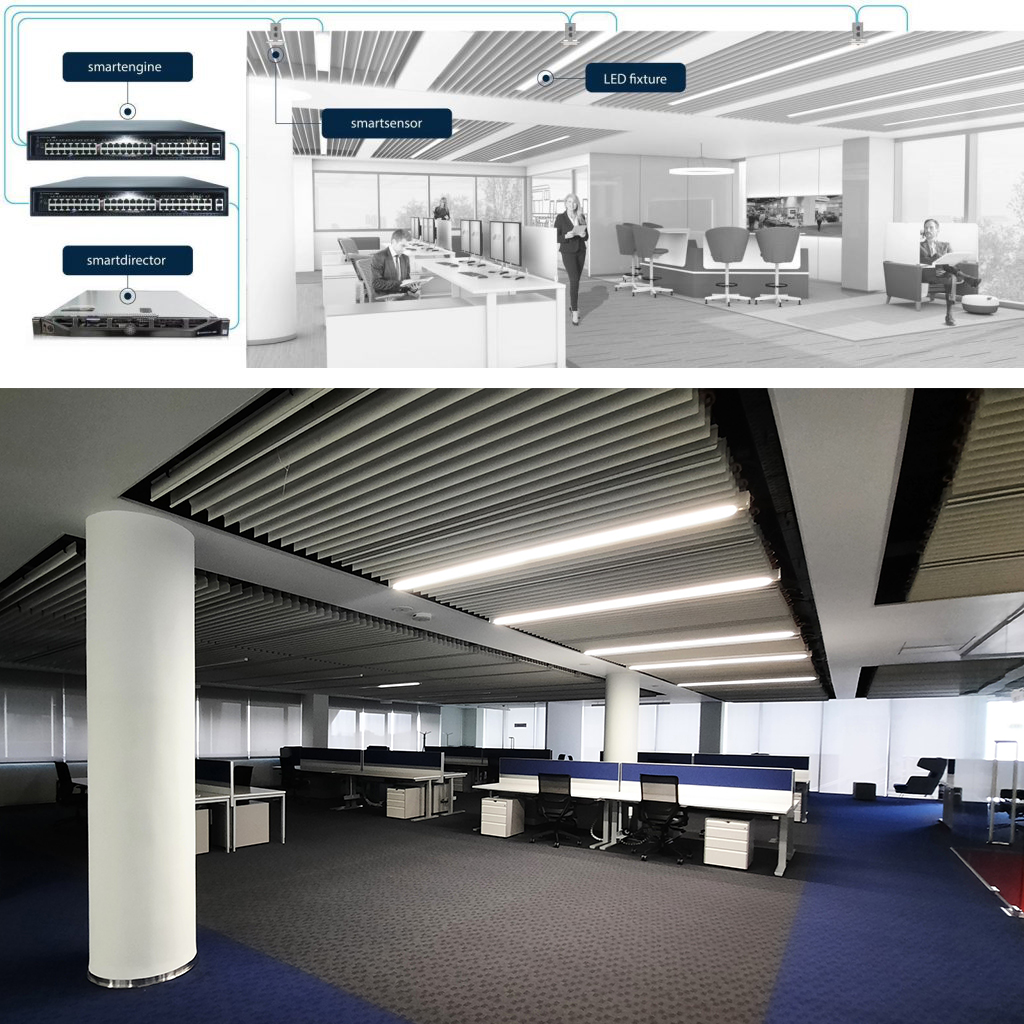Building Automation of the Future
With revolutionary smart building concepts, building automation over IP where Building automation and IT merge completely with an IP-based system. The intelligent network reduces the interfaces between IT and building automation systems and requires no separate infrastructure. They use the existing local data network to ensure a high degree of convenience, productivity and security.
Smart building software forms a central integration point for all types of devices and services of a building automation system and maps the building infrastructure at building, floor or room level. The data prepared by the system forms the basis for decisions that may be necessary regarding resource consumption, adaptation of temperature, CO2 concentration, humidity, lighting and predictive maintenance.
The core component of the smart building solutions is the smart application installed directly on the network switches in the rooms which communicate between sensors, actuators, and users. The environmental parameters measured are evaluated and the corresponding commands are sent to the responsible controller units and actuators. Standard functions are pre-installed and only need to be configured. Adaptations are possible at any time. In addition, users can modify functions, such as lighting or air-conditioning, with the aid of a computer or mobile device on a room-by-room basis. This raises the decentralised interaction of components, convenience and productivity.
- Decentralised building automation over IP
- Scalable architecture
- Fail-safe network topology
- Security through control software
- Protection through IP security standards
- Maximum security through authentication
[edit] Smart lighting
LEDs are progressively replacing conventional light sources in the workplace, particularly in modern office buildings in which special emphasis is placed on ergonomics, convenience and energy efficiency.
Intelligent functions promote productivity and wellbeing and further contribute to energy efficiency and preventing unnecessary lighting costs for corridors or other services area devoid of people or deserted underground car parks.
LEDs can be even more economic if they really only light up as needed and in an adapted intensity. Through the use of sensors, smart lighting allows light to be deployed precisely where it is required. Individual luminaires can be controlled directly using a network powered lighting controller and configurations of individual rooms can be adapted conveniently at the click of a mouse.
Advantages:
- Scalable room-by-room concept, requires no centralised planning or control
- Integration of lighting, shading, heating, air-conditioning, ventilation and public address in an interactive system, including control and monitoring
- Circadian Lights for employee wellbeing
- Optimisation of energy consumption including reduce operating & maintenance costs through anticipative identify cation of the service requirement
- LED control and dimming 0-100%
- Every light gets a sensor and software driven zones define per fixture control.
- Occupancy, Daylight harvesting, temperature at every sensor
- User defined Security alerts (email server configuration required)
- Historical data storage, Real time actual power consumption & Maintenance alarms for every fixture including mobile scene controllers.
- Energy Saving, Optimising Operation & Maintenance,
- Enhancing efficiency & productivity including complying to Green building norms etc.
[edit] Installation of PoE lighting in Plasser India, Karjan, Gujarat, India.
Lighting automation was the requirement for the building where controlling light was the priority of the client. ANA Design Studio planned to use PoE technology to automate the lighting considering the daylight and occupancy are the prime input parameters for the control of light fixtures including switching and dimming as required by the client. Digital input of the occupancy status in any area of the admin building through the light sensor was provided to the building management system to integrate the HVAC system. The data is available on an open API platform through which multiple logics can be created for the HVAC operations.
Instead of implementing typical legacy analogue lighting controls, a scalable reliable digital control operated over wired infrastructure through power over Ethernet (PoE) was implemented.
Challenges we faced on the design were placing the main HUB for the control of lighting. Solutions available in the industry include centralised and decentralised systems. With all pros and cons for the building, the centralised system was finalised and planned for the project of Plasser India Admin block considering the requisite limitation of the requirement of cable lengths.
The system has been commissioned in July 2020 and is running.
The Control & Monitoring over Energy consumptions, Health status of LEDs can be seen from common dashboard simplifying user experience further reduction in operation & maintenance costs.
The system can be easily configured without much engineering, adaptable to site changes from complex wiring system modification and hassle free commissioning (friendly addressing/ grouping) over two way communication which creates a perfect solution for the user .
--ANA Design Studio Pvt Ltd 12:07, 08 Mar 2022 (BST)
[edit] Related articles on Designing Buildings
- Building Automation and Control System BACS.
- Installation of PoE lighting in Plasser India, Karjan, Gujarat, India
- Lighting control.
- Lighting designer.
- Lighting.
- People-friendly lighting controls.
- Smart buildings.
- Smart lighting market to 2020
- Smart office lighting
Featured articles and news
One of the most impressive Victorian architects. Book review.
RTPI leader to become new CIOB Chief Executive Officer
Dr Victoria Hills MRTPI, FICE to take over after Caroline Gumble’s departure.
Social and affordable housing, a long term plan for delivery
The “Delivering a Decade of Renewal for Social and Affordable Housing” strategy sets out future path.
A change to adoptive architecture
Effects of global weather warming on architectural detailing, material choice and human interaction.
The proposed publicly owned and backed subsidiary of Homes England, to facilitate new homes.
How big is the problem and what can we do to mitigate the effects?
Overheating guidance and tools for building designers
A number of cool guides to help with the heat.
The UK's Modern Industrial Strategy: A 10 year plan
Previous consultation criticism, current key elements and general support with some persisting reservations.
Building Safety Regulator reforms
New roles, new staff and a new fast track service pave the way for a single construction regulator.
Architectural Technologist CPDs and Communications
CIAT CPD… and how you can do it!
Cooling centres and cool spaces
Managing extreme heat in cities by directing the public to places for heat stress relief and water sources.
Winter gardens: A brief history and warm variations
Extending the season with glass in different forms and terms.
Restoring Great Yarmouth's Winter Gardens
Transforming one of the least sustainable constructions imaginable.
Construction Skills Mission Board launch sector drive
Newly formed government and industry collaboration set strategy for recruiting an additional 100,000 construction workers a year.
New Architects Code comes into effect in September 2025
ARB Architects Code of Conduct and Practice available with ongoing consultation regarding guidance.
Welsh Skills Body (Medr) launches ambitious plan
The new skills body brings together funding and regulation of tertiary education and research for the devolved nation.
Paul Gandy FCIOB announced as next CIOB President
Former Tilbury Douglas CEO takes helm.

























